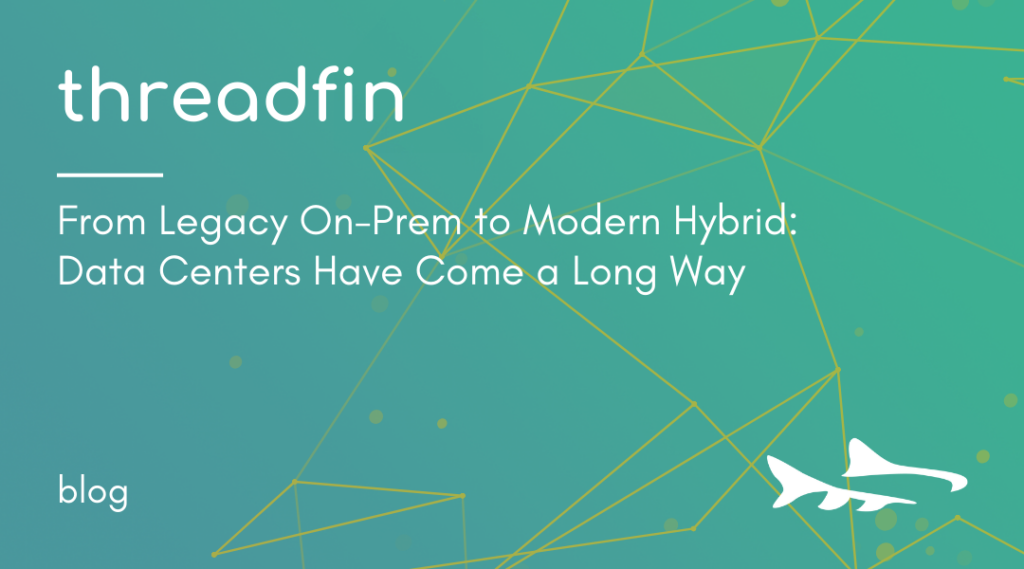From legacy on-prem data centers to cloud adoption and into today’s modern hybrid data centers, the data center has come a long way. Today’s challenges include security, automation, compliance, efficiency and cost management, and the need for both new and legacy skill sets.
We’ve got that experience.
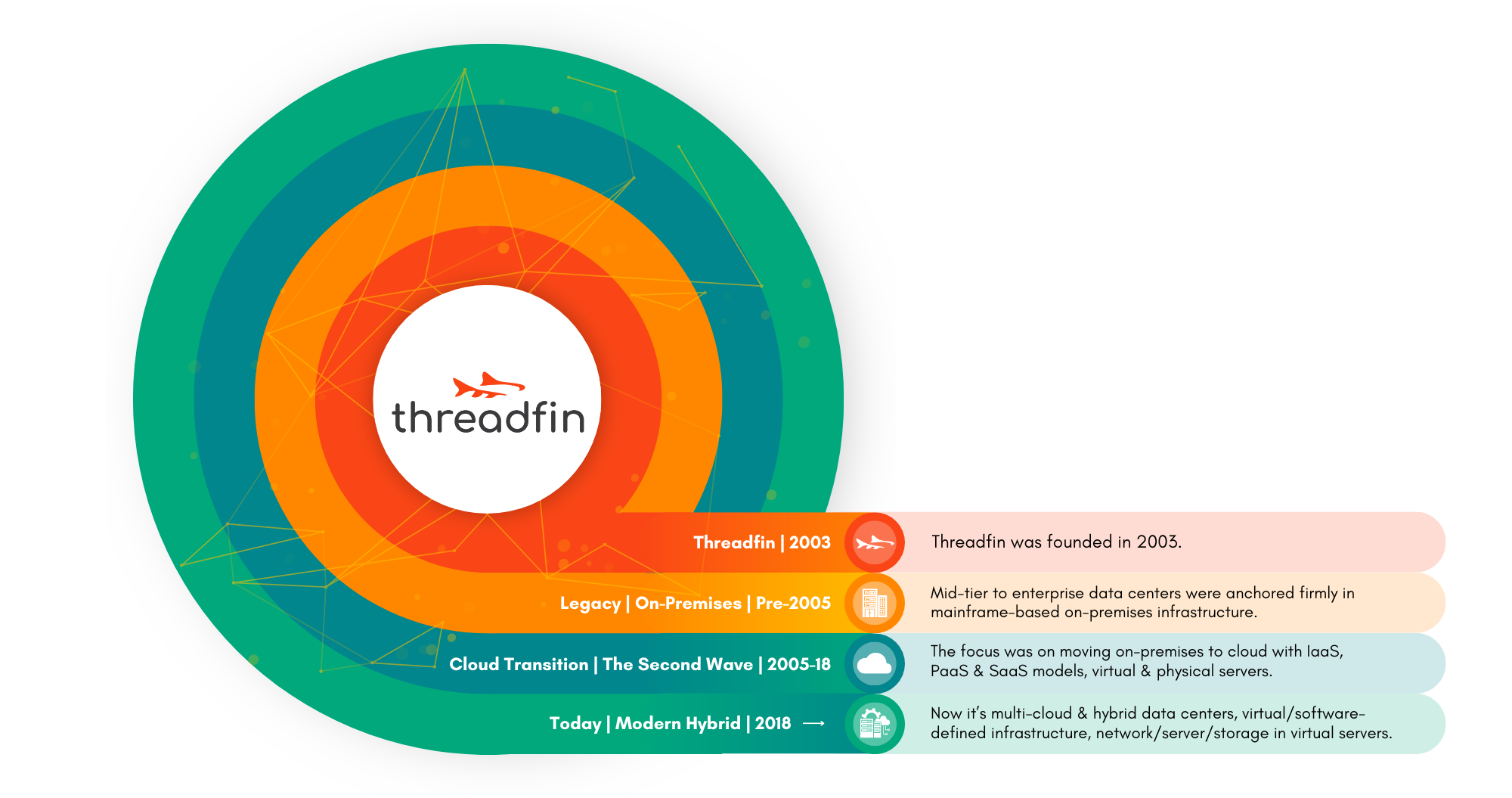
Legacy Era: On-Premises Data Centers
In 2003, when Threadfin was founded, the typical mid-tier to enterprise data center was firmly rooted in legacy on-premises infrastructure, often modeled after the raised floor IBM mainframe environment. The physical environment was fully IP-based, consisting of servers, storage and network equipment forming the digital backbone. Telephony systems were managed through Avaya or Nortel switches, while connectivity relied heavily on frame relay networks. All this fortified by a warm disaster recovery (DR) site backed by a diesel generator that was only tested every six months.
Day-to-day management was a challenge. Organizations struggled to gain comprehensive oversight over their infrastructure, even with large network management platforms like HP Open View—probably partially deployed. Scalability was hindered by rigid capital expenditure (CapEx) requirements. Support teams relied on core infrastructure expertise, IP networking, compute knowledge and the ability to navigate legacy applications while leveraging basic scripting for security.
While we focus on ArchOps, DevOps, FinOps and SecOps today, the only relevant pillar at the time was ArchOps, which encompassed architecture and operations.
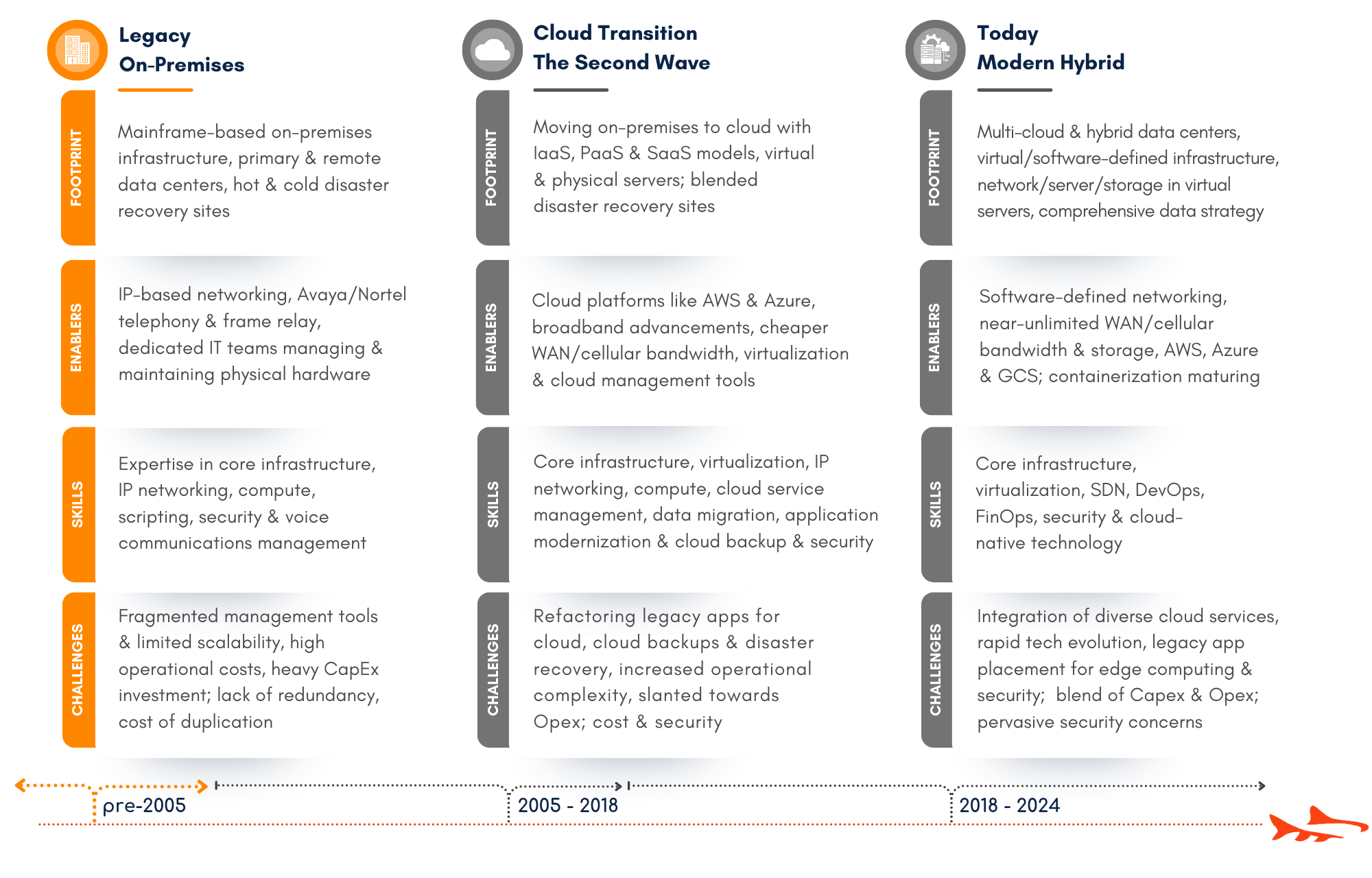
Cloud Transition: The Second Wave
Fast-forward 7 years, and the IT landscape underwent a dramatic shift—the second wave of cloud computing. AWS and Microsoft led the charge, prompting a rush to migrate everything off-premises and into the cloud. Advancements in virtualization technology (like VMware) played a crucial role, along with better and more affordable WAN circuitry and cellular bandwidth.
Infrastructure as a Service (IaaS), Platform as a Service (PaaS) and Software as a Service (SaaS) gained popularity. Organizations focused on moving legacy applications off-site, leveraging cloud backups and disaster recovery for resilience. Operational spending (OpEx) increasingly replaced CapEx. Core infrastructure remained essential, alongside virtualization, IP networking and compute expertise. Teams guided clients through recoding legacy applications for cloud compatibility while enhancing security.
During this era, the relevant Threadfin pillars expanded to include ArchOps, DevOps and SecOps.
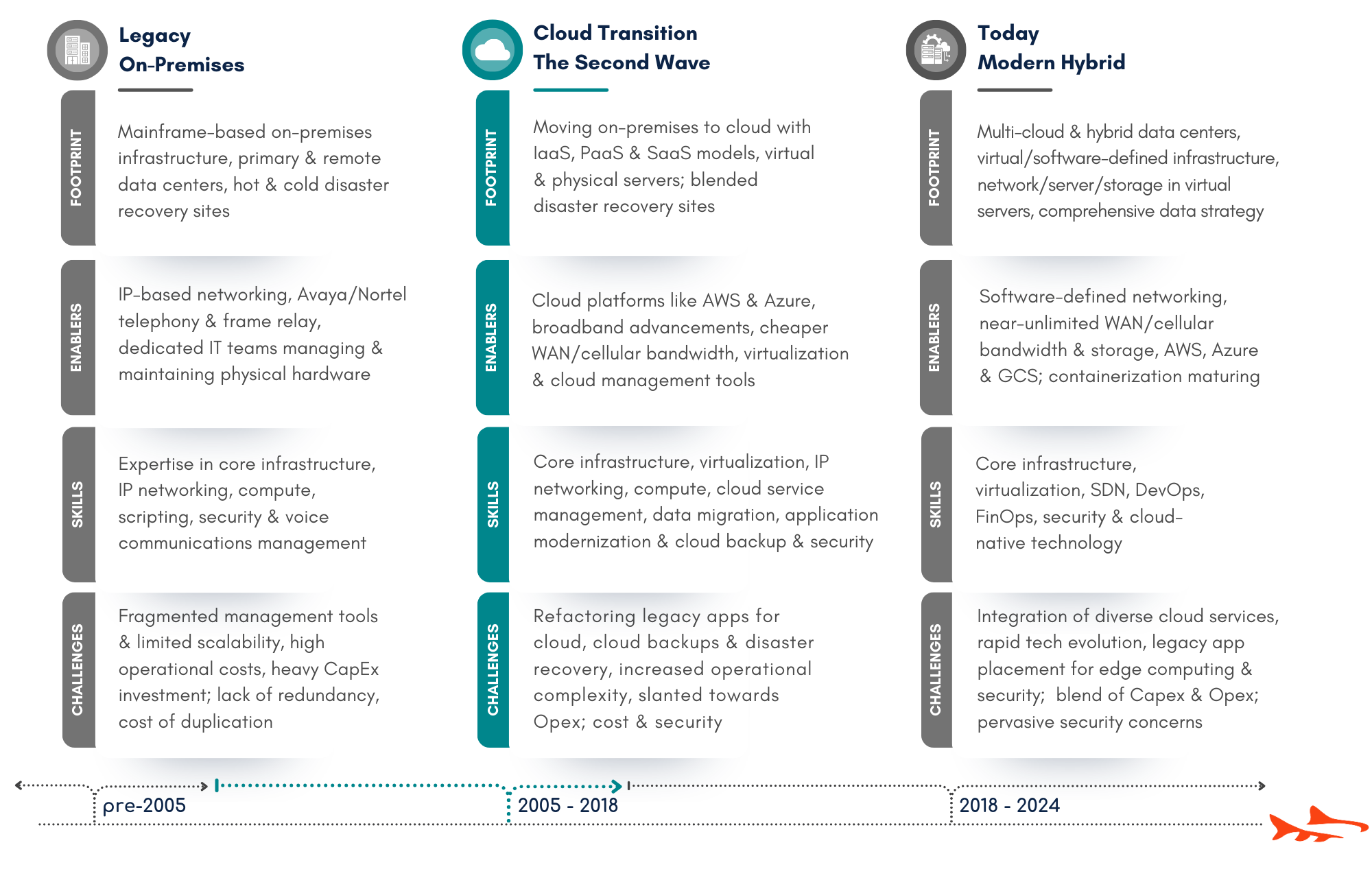
Modern Hybrid Data Centers
Today, modern hybrid data centers are the new standard. Remarkable advances in virtualization technology and software-defined infrastructure have driven this evolution. Software-defined networking (SDN) allows organizations to operate with almost limitless WAN and cellular bandwidth. The ubiquity of AWS, Azure and Google Cloud Services (GCS) enables seamless movement between cloud and on-premises resources, creating a transparent and highly flexible infrastructure footprint.
This footprint is now virtual and software-defined. Network, server and storage systems predominantly reside in virtual servers, supported by sprawling data lakes and cloud-based management tools. Organizations carefully evaluate legacy applications, deciding which belong in the cloud and which should remain on-premises due to edge computing requirements and stringent security needs. Artificial intelligence (AI) adds another layer of complexity, compelling organizations to safeguard their data against potential compromise. In this modern hybrid data center model, OpEx and CapEx blend strategically.
Support skills now require deep knowledge in ArchOps, including core infrastructure, virtualization, software-defined infrastructure, DevOps, FinOps and SecOps, encapsulating all four of our pillars seamlessly. Modern hybrid data centers are a testament to adaptability and precision, balancing cutting-edge technology with the tried-and-true principles of sound IT management.
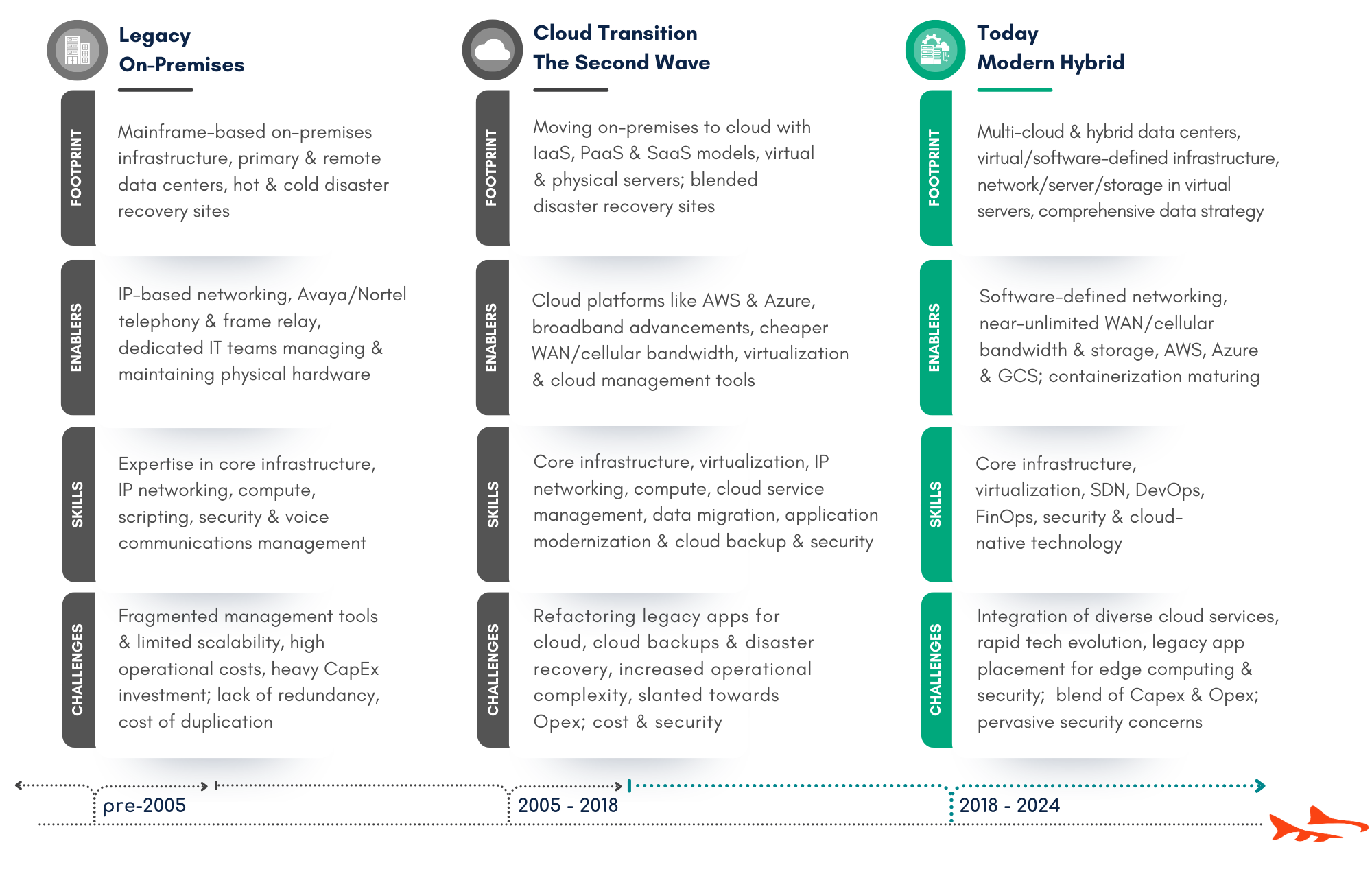
Organizations that embrace these innovations while maintaining a strategic blend of infrastructure will remain agile and competitive. By staying grounded in the core pillars of ArchOps, DevOps, FinOps and SecOps, organizations can successfully navigate the complexities of the hybrid era.
Click here for a one-pager that summarizes this information and contact us for more details.

